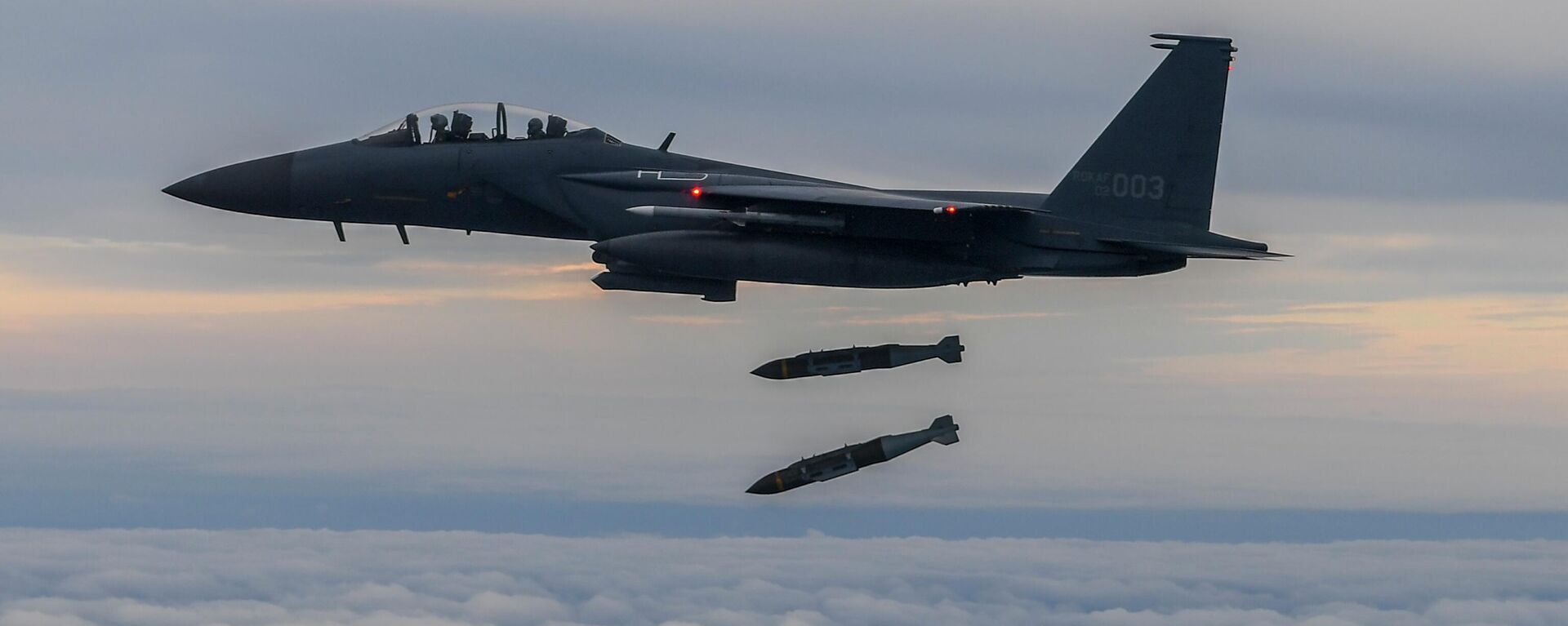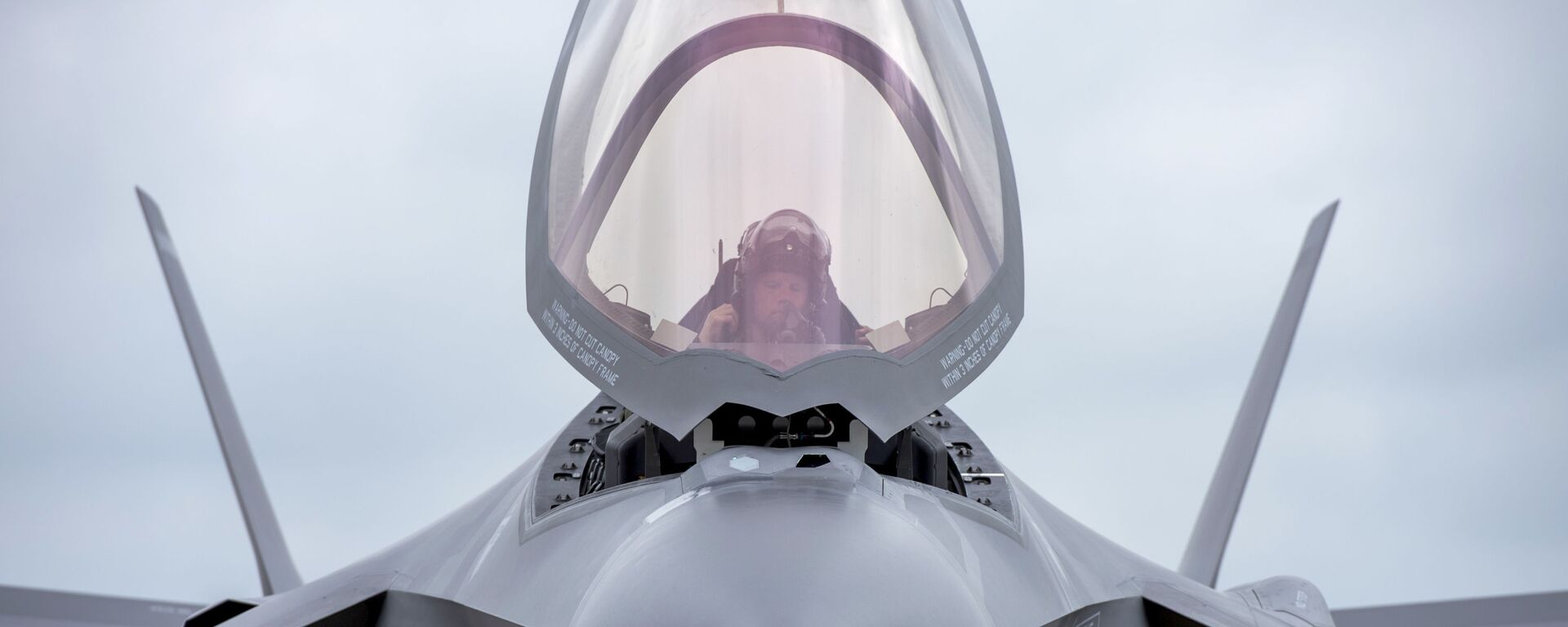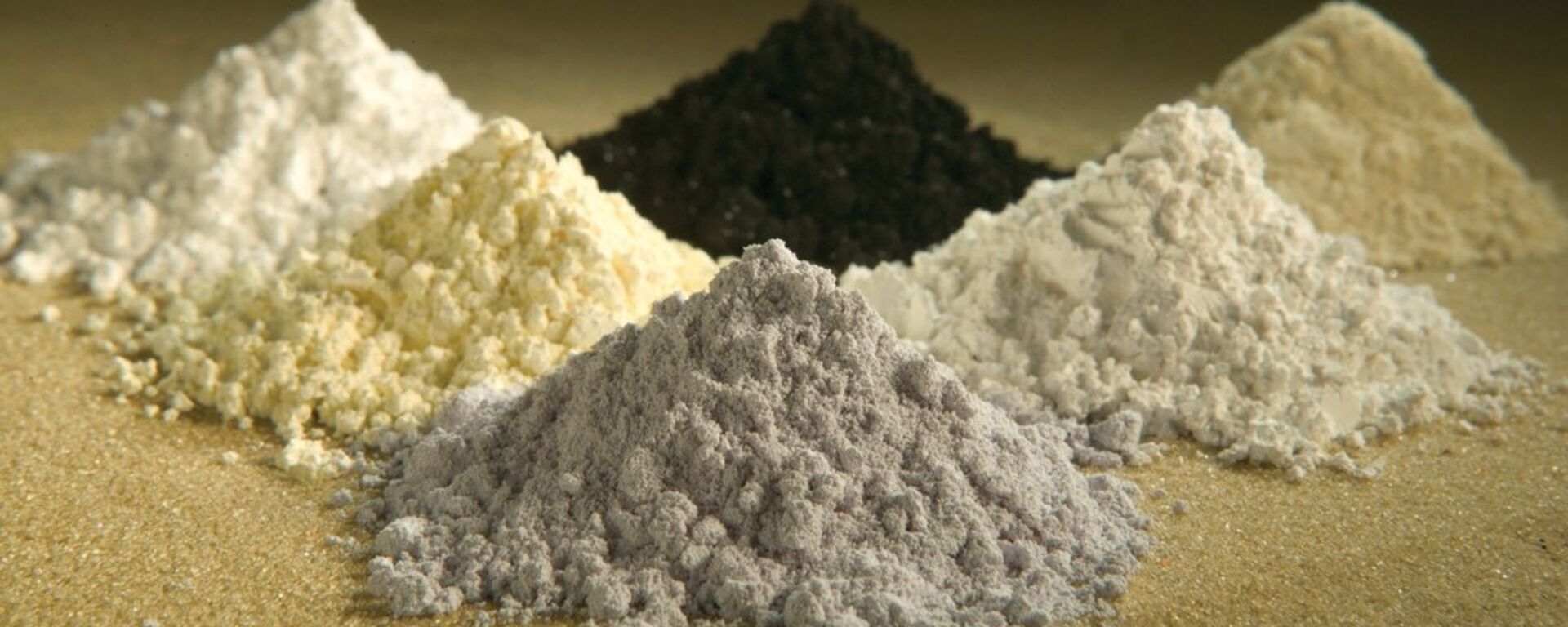https://sputnikglobe.com/20230427/wrench-in-the-war-machine-whats-causing-americas-arms-and-ammo-shortages-1109882415.html
Wrench in the War Machine: What's Causing America's Arms and Ammo Shortages?
Wrench in the War Machine: What's Causing America's Arms and Ammo Shortages?
Sputnik International
The proxy war in Ukraine, where Ukrainian forces are burning through ammunition faster than NATO can produce it, combined with the $19 billion backlog in US arms sales to Taiwan, have exposed major cracks in America’s military-industrial complex (MIC). What are its causes? And what does Washington intend to do about it? Sputnik explains.
2023-04-27T12:27+0000
2023-04-27T12:27+0000
2023-04-27T12:48+0000
sputnik explains
military-industrial complex
us military-industrial complex
weapons
arms
ammunition
guns
bombs
shortages
https://cdn1.img.sputnikglobe.com/img/07e7/04/1b/1109881278_0:135:1080:743_1920x0_80_0_0_7c34d60b04f89ae2c75a1d31ae19709d.png
US business media think they’ve found one of the culprits behind the MIC’s failure to crank out enough bullets, bombs, mortar and artillery shells, and Tomahawk cruise missiles for the US military and Washington’s foreign clients. Apparently, the loss by explosion of a massive black powder factory in Minden, Louisiana in June 2021 deprived the arms industry of its only domestic source of the crucial explosive material.Black powder is a crucial component in a wide array of weapons –such as 155mm howitzer shells, where about half an ounce (14 grams) of the explosive is wedged next to about 26 pounds (11.8 kg) of TNT or "Comp B" TNT/RDX mixture.Costs of MonopolizationThe outlet blamed the debacle at the black powder factory on the consolidation and monopolization of America’s defense industrial base over the past 30 years or so, pointing out that the situation with the supplier is indicative of problems across the defense sector. The Pentagon relies on just two major companies for warship and aircraft construction, while in missiles, just three giants, Lockheed Martin, Raytheon, and Boeing, account for more than 90 percent of all production.With the Louisiana black powder plant’s destruction, the MIC has reportedly turned to existing stockpiles, with supplies also apparently available in Europe, Brazil, and China. Along with the explosive, the Pentagon has calculated that there are over two dozen defense-related chemicals that have no domestic source and must be purchased abroad, including from countries like China, Russia, and Ukraine, and has committed over $207 million to addressing the problem.Waste Not, Want NotBut the problem goes much deeper than monopolization or “single source” suppliers. Another, perhaps fundamental, issue relates to the monumental waste at the Pentagon (which failed its fifth consecutive audit in a row last November).The Department of Defense has faced numerous scandals, from the disappearance of over $2.3 trillion in DoD funds, to reports of a whopping $35 trillion in “accounting adjustments” stemming from double or triple-counting money moving between accounts. But despite the scandals, nothing ever seems to be done about the problem, perhaps due to the practice of extensive lobbying of Congress, and the revolving door of cushy jobs between the Pentagon and defense sector companies, and vice versa.With an annual defense budget of over $797 billion in 2023 (and a White House spending request of $886 billion for fiscal year 2024), the United States is by far the biggest military spender on the planet. According to a fresh analysis by the Stockholm International Peace Research Institute, the US and its NATO allies spent a combined $1.2 trillion on defense in 2022, more than quadruple what China did, and nearly 14 times more than Russia – which was engaged in a full-on proxy war against NATO over the same period.What has the US gotten for this money? While the raw power or threat of the US military machine should not be understated, it can't be said that the money has been used effectively. The US military, for example, continues to lack the hypersonic missile capability that Russia and China have had going on over five years now, and four of the six branches of its military continue to suffer from an array of problems with the F-35 Joint Strike Fighter – a program whose estimated lifetime cost is expected to balloon to more than $1.7 trillion in the coming decades.Rare Earths HeadachesAnother problem for the MIC is that raw materials used in the production of advanced defense products and components are sourced abroad. Earlier this month, Asian business media reported that China – which accounts for the production of up to 90 percent of some rare earth metal components, was considering restrictions on the export of magnet technology to the US on "national security" grounds in response to Washington’s technology restrictions. Rare earths are used in a vast array of civilian and military goods, including electric vehicles and batteries, semiconductors and smartphones, industrial robots, and components for missiles, stealth aircraft, and satellites.The United States now has just one active rare earth mine – the Mountain Pass Mine in California, but it sends most of its output to China for processing. Last year, American media sounded the alarm about the People’s Republic's ability to starve the US military-industrial complex by simply cutting off rare earths exports. US officials have taken steps to shore up domestic production, and to diversify production and processing to other regions, like Africa, Australia, and even the UK, but have yet to report any major successes, with US lawmakers continuing to quibble about what additional measures can be taken to curb Beijing's dominance in this sector.The crisis in Ukraine and Washington's efforts to provoke China in Taiwan have breathed new life into the US military-industrial complex and served as justification for hundreds of billions of additional dollars in defense spending.The question now is not only whether the industrial base gutted by decades of neoliberal economic policy will be able to step up to deal with the challenges before it, but whether the dollar itself will survive as the world’s reserve currency to fund it all amid steps by China, Russia, and even traditional US allies like Saudi Arabia, Brazil, and South Africa to end the greenback’s hegemony.
https://sputnikglobe.com/20230426/pentagon-uses-ukraine-as-testing-ground-while-prepping-for-clear-china-standoff--1109847462.html
https://sputnikglobe.com/20230414/us-state-department-pentagon-preparing-pathway-to-hasten-foreign-weapons-sales-media-reports-1109536353.html
https://sputnikglobe.com/20230331/us-struggling-to-make-its-f-35-fleet-mission-ready-while-poking-china--russia-1109008842.html
https://sputnikglobe.com/20230405/rare-earths-behemoth-china-mulls-ban-on-export-of-key-magnet-tech-to-us-1109178024.html
Sputnik International
feedback@sputniknews.com
+74956456601
MIA „Rossiya Segodnya“
2023
News
en_EN
Sputnik International
feedback@sputniknews.com
+74956456601
MIA „Rossiya Segodnya“
Sputnik International
feedback@sputniknews.com
+74956456601
MIA „Rossiya Segodnya“
military-industrial complex, us, united states, shortages, bottlenecks, supplies, problems, causes, issues
military-industrial complex, us, united states, shortages, bottlenecks, supplies, problems, causes, issues
Wrench in the War Machine: What's Causing America's Arms and Ammo Shortages?
12:27 GMT 27.04.2023 (Updated: 12:48 GMT 27.04.2023) The proxy war in Ukraine, where Kiev’s forces are burning through ammunition faster than NATO can produce it, combined with the $19 billion backlog in US arms sales to Taiwan, have exposed major cracks in America’s military-industrial complex (MIC). What are the causes? And what does Washington intend to do about it? Sputnik explains.
US business media think they’ve found one of the culprits behind the MIC’s failure to crank out enough bullets, bombs, mortar and artillery shells, and Tomahawk cruise missiles for the US military and Washington’s foreign clients. Apparently, the loss by explosion of a massive black powder factory in Minden, Louisiana in June 2021
deprived the arms industry of its only domestic source of the crucial explosive material.
The explosion, apparently caused by an errant spark in the WWII-era production facility, left the massive factory complex, then owned by Hodgdon Powder Company, offline, shuttering an enterprise which had been in business since the early 1800s, and which supplied the US military during all of the major conflicts of the 20th century, from the First and Second World Wars to Korea and Vietnam. The mill is now apparently owned by a Colorado-based model rocket maker called Estes Industries, and is expected to go online later this year after refurbishment.
Black powder is a crucial component in a wide array of weapons –such as 155mm howitzer shells, where about half an ounce (14 grams) of the explosive is wedged next to about 26 pounds (11.8 kg) of TNT or "Comp B" TNT/RDX mixture.
The outlet blamed the debacle at the black powder factory on the consolidation and monopolization of America’s defense industrial base over the past 30 years or so, pointing out that the situation with the supplier is indicative of problems across the defense sector. The Pentagon relies on just two major companies for warship and aircraft construction, while in missiles, just three giants, Lockheed Martin, Raytheon, and Boeing, account for more than 90 percent of all production.
The "single source" issue is another major problem, apparently, with items which require just a small amount of a particular component – like black powder for explosive ordinance, titanium castings used in howitzers, rocket motors in the Javelin and Stinger missile systems, turbofan engines in cruise missiles, and ball bearings in certain missile guidance systems, all relying on enterprises which – if destroyed, damaged, or bankrupted, could cause a system-wide domino effect of production bottlenecks and shortages.
With the Louisiana black powder plant’s destruction, the MIC has reportedly turned to existing stockpiles, with supplies also apparently available in Europe, Brazil, and China. Along with the explosive, the Pentagon has calculated that there are over two dozen defense-related chemicals that have no domestic source and must be purchased abroad, including from countries like China, Russia, and Ukraine, and has committed over $207 million to addressing the problem.
But the problem goes much deeper than monopolization or “single source” suppliers. Another, perhaps fundamental, issue relates to the monumental waste at the Pentagon (which
failed its fifth consecutive audit in a row last November).
The Department of Defense has faced numerous scandals, from the disappearance of over
$2.3 trillion in DoD funds, to reports of a whopping
$35 trillion in “accounting adjustments” stemming from double or triple-counting money moving between accounts. But despite the scandals, nothing ever seems to be done about the problem, perhaps due to the practice of
extensive lobbying of Congress, and the revolving door of cushy jobs between
the Pentagon and defense sector companies, and vice versa.
With an annual defense budget of over $797 billion in 2023 (and a White House spending request of
$886 billion for fiscal year 2024), the United States is by far the biggest military spender on the planet. According to a fresh analysis by the Stockholm International Peace Research Institute, the US and its NATO allies spent a combined
$1.2 trillion on defense in 2022, more than quadruple what China did, and nearly 14 times more than Russia – which was engaged in a full-on proxy war against NATO over the same period.
What has the US gotten for this money? While the raw power or threat of the US military machine should not be understated, it can't be said that the money has been used effectively. The US military, for example, continues to lack the hypersonic missile capability that Russia and China have had going on over five years now, and four of the six branches of its military continue to suffer from an array of problems with the F-35 Joint Strike Fighter – a program whose estimated lifetime cost is expected to balloon to more than $1.7 trillion in the coming decades.
Another problem for the MIC is that raw materials used in the production of advanced defense products and components are sourced abroad. Earlier this month, Asian business media reported that China – which
accounts for the production of up to 90 percent of some rare earth metal components, was considering restrictions on the export of magnet technology to the US on "national security" grounds in response to Washington’s technology restrictions. Rare earths are used in a vast array of civilian and military goods, including electric vehicles and batteries, semiconductors and smartphones, industrial robots, and components for missiles, stealth aircraft, and satellites.
The United States now has just one active rare earth mine – the Mountain Pass Mine in California, but it sends most of its output to China for processing. Last year, American media sounded the alarm about the People’s Republic's ability to starve the US military-industrial complex by simply
cutting off rare earths exports. US officials have taken steps to shore up domestic production, and to diversify production and processing to other regions, like Africa, Australia, and even the UK, but have yet to report any major successes, with US lawmakers
continuing to quibble about what additional measures can be taken to curb Beijing's dominance in this sector.
The crisis in Ukraine and Washington's efforts to provoke China in Taiwan have breathed new life into the US military-industrial complex and served as justification for hundreds of billions of additional dollars in defense spending.
The question now is not only whether the industrial base gutted by decades of neoliberal economic policy will be able to step up to deal with the challenges before it, but
whether the dollar itself will survive as the world’s reserve currency to fund it all amid steps by China, Russia, and even traditional US allies like Saudi Arabia, Brazil, and South Africa
to end the greenback’s hegemony.





